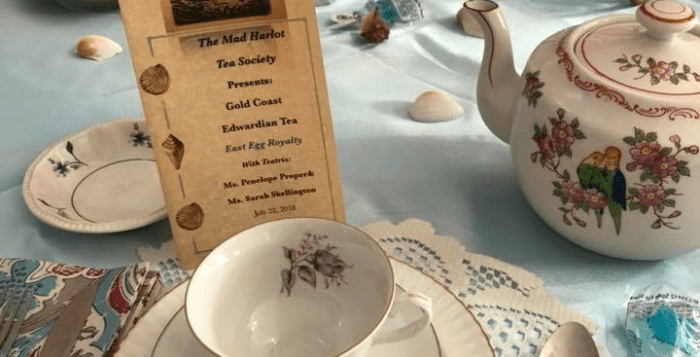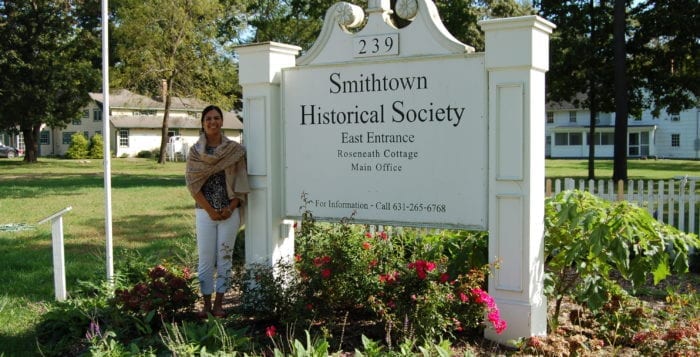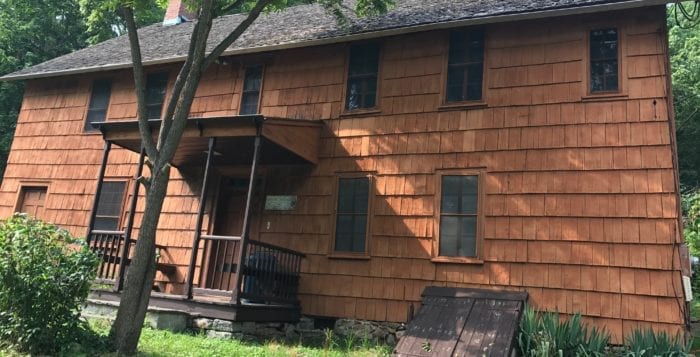By Leah Chiappino
“Smile!” A goat named Dash steals the show as he is placed on each attendee’s back for a photo-op as they are in a table top position. When my turn comes around, Dash has a hard time staying put on my back due to my inappropriate attire of work clothes, causing him to continually adorably slip off until he is able to steady himself for the shot.
It’s early June and I’m attending a Goat Yoga class at the Smithtown Historical Society. The session, which features 10 to 15 goats of all ages, is taught by yoga instructor Kelly Mitchell of the Buddha Barn in Bellmore, who after being inspired to begin animal activism by a dog fundraiser at her yoga studio, partnered with Karen Bayha from Steppin’ Out Ponies and Petting Zoo to begin teaching these outdoor sessions.
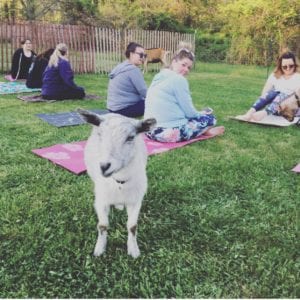 The classes may be more sought out by those looking for an Instagramable shot that is sure to get a surge of likes than die-hard “yogis” but manage to encompass the main benefits of yoga, which are, according to Mitchell, “love, connection, and union.”
The classes may be more sought out by those looking for an Instagramable shot that is sure to get a surge of likes than die-hard “yogis” but manage to encompass the main benefits of yoga, which are, according to Mitchell, “love, connection, and union.”
The trend is growing. According to CNBC, Lainey Morse, founder of Original Goat Yoga classes in Corvallis, Oregon, made $160,000 in just her first year of business.
Since she started last summer, Mitchell said that her classes “usually always fill and sell out fast.”
Its rise in popularity reaps benefits for the Smithtown Historical Society, which has hosted Goat Yoga since 2017 after former director Marianne Howard started it with a friend, according to its executive director, Priya Kapoor. “I’ve seen people come from as far as Queens just to do this, people who normally wouldn’t know about the Smithtown Historical Society. [Goat Yoga] has been great for community exposure,” she said.
While its popularity may be due to its appearance on shows like “Keeping Up With the Kardashians” and “The Real Housewives of Beverly Hills,” Mitchell feels Goat Yoga is a unique opportunity to raise awareness for the goats themselves, most of whom are rescued by Bayha from slaughterhouses and neglectful pet owners.
Mitchell also hopes to bring to light the importance of animal welfare and abuse prevention. “I hope this makes people think differently about the choices they make,” she said.
On her website, www.buddhabarnyoga.com, the yoga instructor further discusses the impact Goat Yoga is having on her mission and newfound passion for animal welfare. “[Goat Yoga] has changed me as a human being. I wasn’t a big meat eater, but I am now a proud vegan. I wish my eyes were open sooner. But I will spend the rest of my life as an animal rights activist, not just a pet lover. With that being said, many practitioners left with a heightened awareness regarding animals in need. If just one person decides to reduce their meat consumption, then I’ve done my job,” she states.
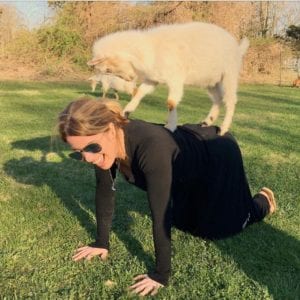 Mitchell admitted that the yoga community sometimes “turns their nose up” to Goat Yoga, but she herself sees the beauty in it because “yoga itself is about connection; it’s about love. Just looking at the goats, you can see they’re so kind, friendly and silly. It’s just a beautiful way to not take life so seriously, get outside, and have fun with family and friends.”
Mitchell admitted that the yoga community sometimes “turns their nose up” to Goat Yoga, but she herself sees the beauty in it because “yoga itself is about connection; it’s about love. Just looking at the goats, you can see they’re so kind, friendly and silly. It’s just a beautiful way to not take life so seriously, get outside, and have fun with family and friends.”
This was evident throughout the session. From the goat that stayed put on one woman’s yoga mat to the beams across faces as a goat walked by, to the laughter when one goat relieved himself on an innocent yoga mat, the field where the class took place was filled with nothing but joy.
Perhaps the most touching aspect was the bond between Bayha and Dash, a goat whom she bottle fed and raised him “as his mother,” according to Mitchell. Now, when Bayha calls his name, he comes running with the same elation a human child would upon greeting his mother after being away from them for a weekend. The difference in this case was that Bayha was not away from Dash for even five minutes. People were in awe.
“It’s moments like this, when I see the excitement on people’s faces, that make me feel like I’m making a difference,” Mitchell said. She also feels this is a great way to introduce people to yoga. “It’s not scary. A lot of people that come into my studio are very intimidated. They don’t know what to expect, they think everybody will be twisting up in pretzels. This is a great way to get people to say ‘Wow, I might want to take a yoga class.’
IF YOU GO:
 The Smithtown Historical Society hosts Goat Yoga classes for ages 18 and up in the field behind the Frank Brush Barn, 211 East Main St., Smithtown throughout the summer. All levels welcome. Please bring a mat, towel and a bottle of water.
The Smithtown Historical Society hosts Goat Yoga classes for ages 18 and up in the field behind the Frank Brush Barn, 211 East Main St., Smithtown throughout the summer. All levels welcome. Please bring a mat, towel and a bottle of water.
Upcoming classes include July 19, July 26, Aug. 13, Aug. 19, Aug. 20, Sept. 5, Sept. 9 and Sept. 17. A 45-minute session is held at 5:30 and again at 6:45 p.m. Each session is $25 per person and must be paid in advance through www.eventbrite.com. For more information, call 631-265-6768 or visit www.smithtownhistorical.org.



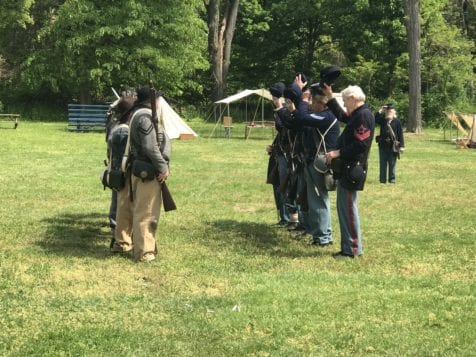
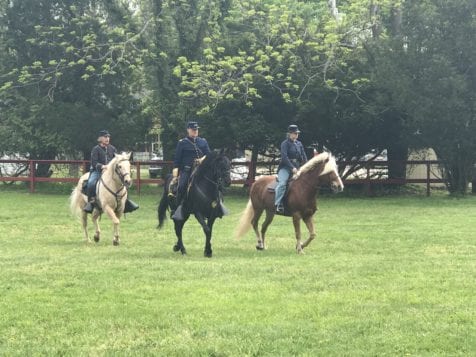
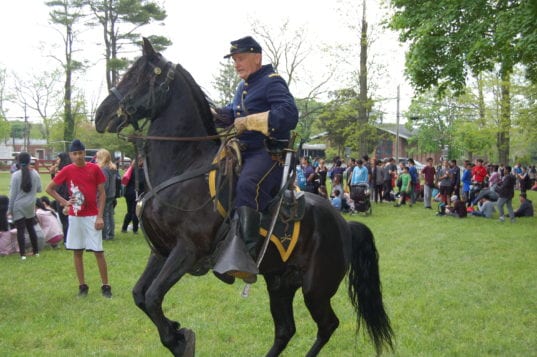
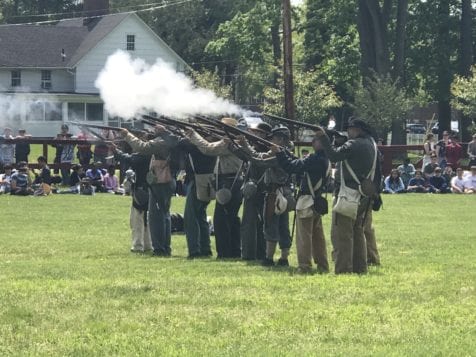
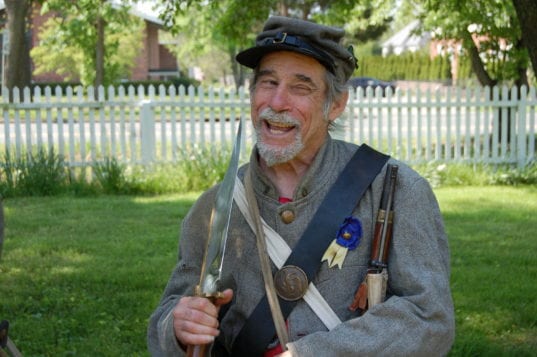
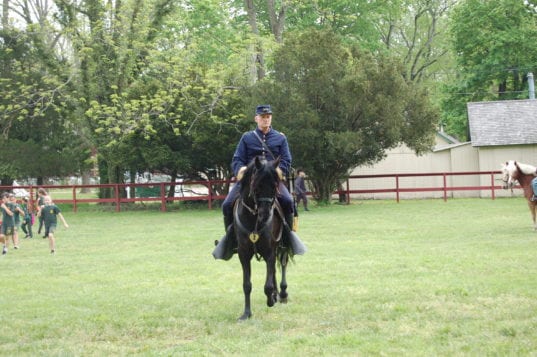
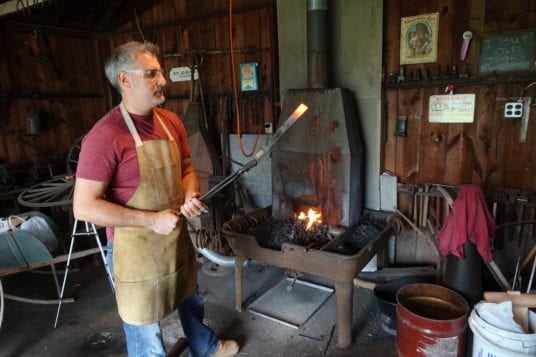
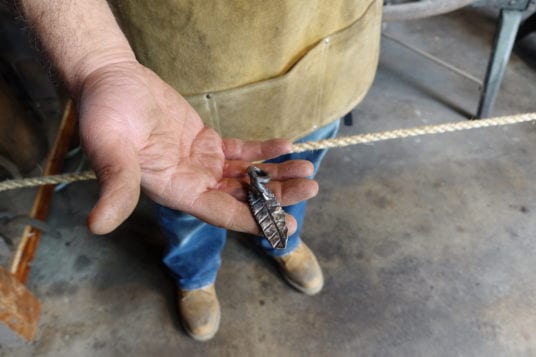
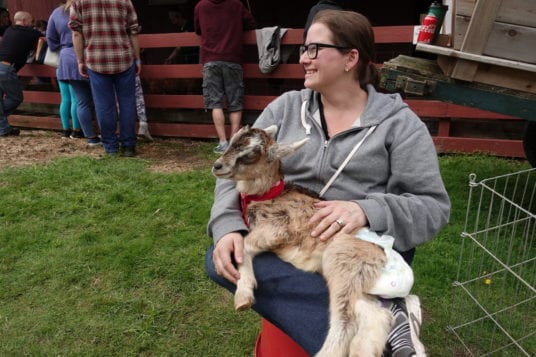
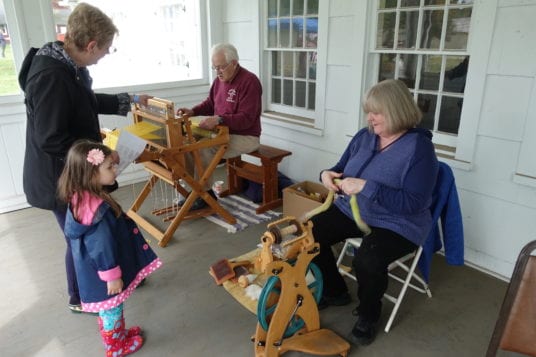
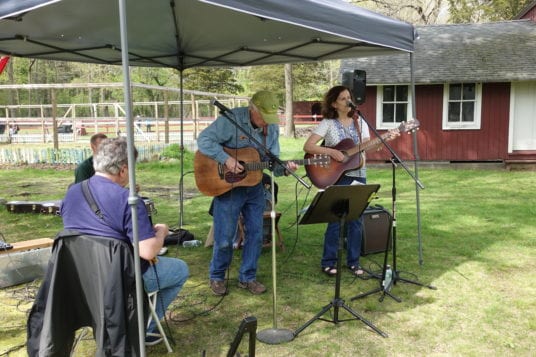
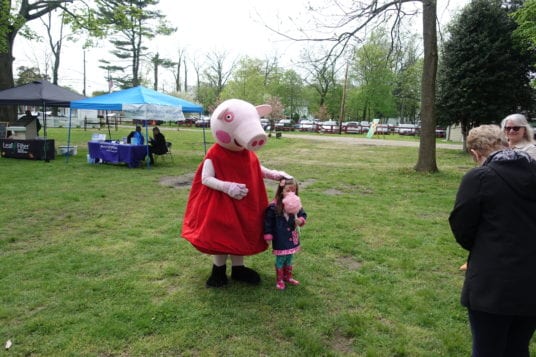
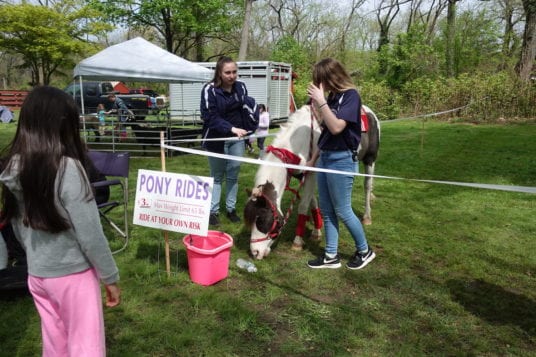
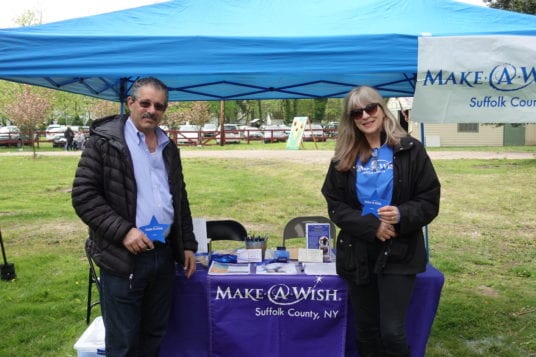
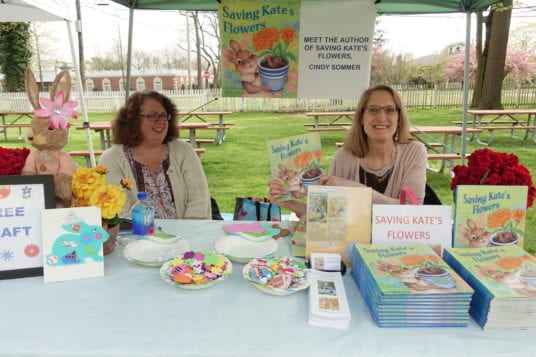
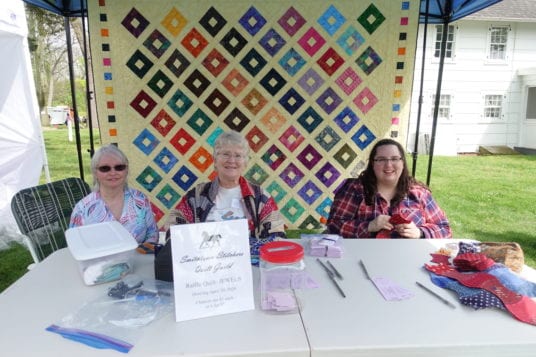
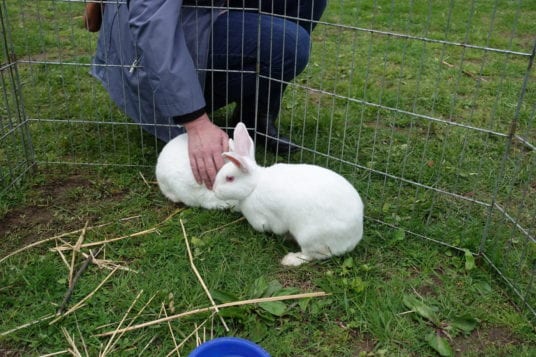
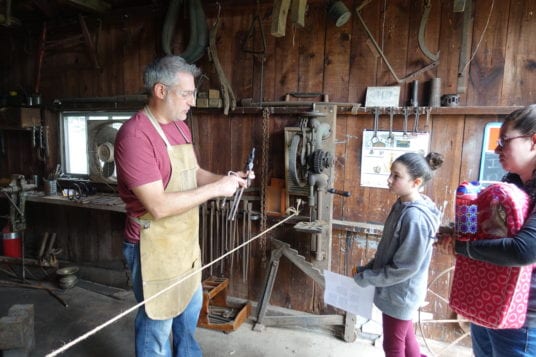
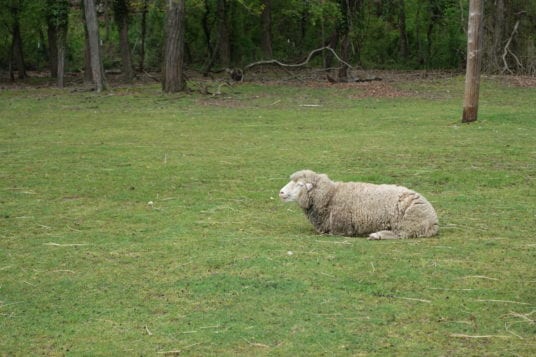
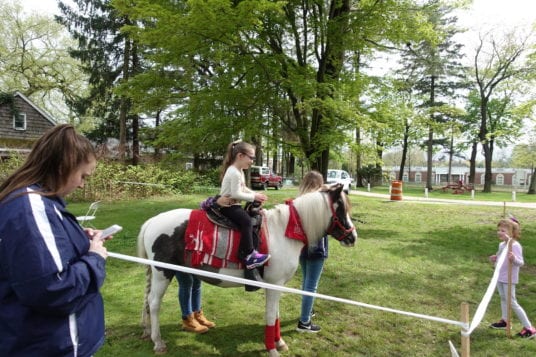
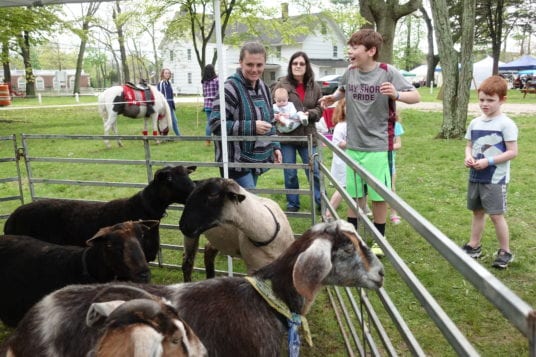


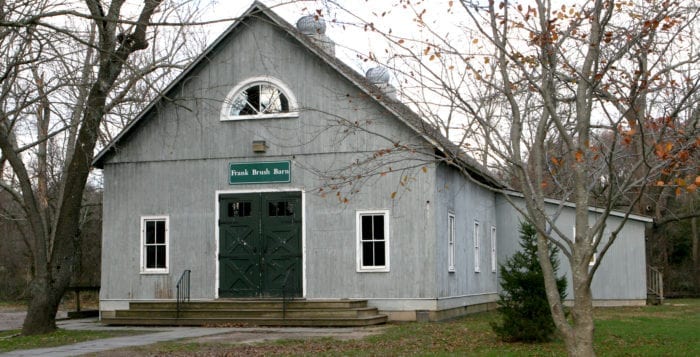
 Celebrate Irish heritage with Irish Night at the Smithtown Historical Society’s Frank Brush Barn, 211 East Main St., Smithtown on March 11 at 7 p.m. Featuring corned beef and cabbage from Faraday’s of Smithtown, dancing by the Mulvihill-Lynch Studio of Irish Dance, live traditional Irish music by John Corr, raffles and a limerick contest. Tickets are $30, $25 members. Call 631-265-6768 for more information or to RSVP.
Celebrate Irish heritage with Irish Night at the Smithtown Historical Society’s Frank Brush Barn, 211 East Main St., Smithtown on March 11 at 7 p.m. Featuring corned beef and cabbage from Faraday’s of Smithtown, dancing by the Mulvihill-Lynch Studio of Irish Dance, live traditional Irish music by John Corr, raffles and a limerick contest. Tickets are $30, $25 members. Call 631-265-6768 for more information or to RSVP.